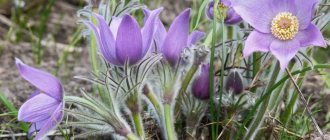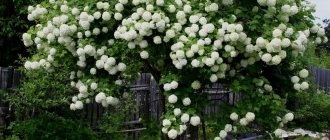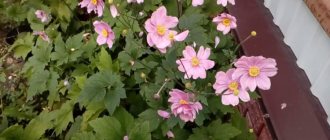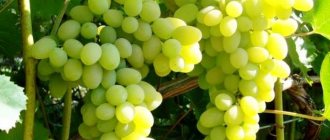What it looks like, what family it belongs to
A herbaceous perennial from the Commelinaceae family grows up to 1 meter, low dwarf species - up to 20 cm, and are often grown as indoor plants. The shrub has thin, nodular shoots and a fibrous root system. The leaves are petiolate, spreading, from ovate with a pointed tip to elongated lanceolate. The flowers are small, 3-petaled, with white or colored buds. In winter, the plant does not freeze out under a layer of mulch.
Tradescantia garden has more than 70 species
Diseases and pests
To prevent the development of insects, the bush should be periodically inspected. The flower is susceptible to attack by scale insects or mites, which suck the juice from the leaves and stems. This can lead to drying out of the bush.
If pests are found, you should try to remove them. After this, treat the plant with such preparations as Karbofos, Fufanon, Actellik. If this does not help, gardeners recommend cutting off the damaged parts and then treating them again with insecticides.
Tradescantia can often become infected with sooty fungus. In this case, a thin white film forms on the shoots or leaf blades. The bush's photosynthesis process is disrupted, which will make it weak and painful. You can remove the fungus by wiping the plant with soapy water or spraying it with tincture of dandelion roots 5 to 10 times.
Briefly about the history of appearance
Garden camellia - planting and care in open ground
The flower received the name Tradescantia in the 17th century, when a gardener at the court of the English king Charles the First planted it in the garden. The gardener's name was John Tradescant, he was the first to start breeding plants. Anderson's Tradescantia is named after another gardener - a Danish botanist who developed varieties with large colored buds.
Note! Many species grow well in water with a small dose of organic matter. They don't require land. Noticing this feature, landscape designers began to plant Tradescantia near water bodies.
Homeland of the plant
The flower came to England from the American state of Virginia. Virginia is a group of narrow-leaved varieties.
How does Tradescantia propagate?
Naturally, owners of such beautiful and unusual indoor plants want to replenish their home garden with young plants. In this case, both generative and vegetative propagation are possible. We invite you to consider a detailed description of all possible methods, after which you can choose the most suitable one for yourself.
Cuttings
Tradescantia cuttings are perhaps the most popular propagation method. It can be carried out throughout the year. Select several powerful shoots, separate them from the bush, and then divide them into several parts of 10-15 centimeters each. Prepare pots with a soil mixture of sand, compost and humus soil, place 5-8 cuttings in them and water generously with soft water. Place flowerpots with seedlings in a well-lit place, maintain the temperature at 18-20°C and regularly moisten the substrate. Within a few days the cuttings will take root. As soon as they begin to grow, transplant them into individual pots and care for them as you would for adult Tradescantia.
Tradescantia can be propagated using cuttings
Leaf cuttings
Propagation by cuttings is a very simple method that even novice gardeners can handle. To begin, select a suitable cutting. It should be dense, healthy and have 2-3 formed leaves. Both the apical and lateral parts of the stem work well. Experts recommend placing the cut shoot in water for several days so that it takes root, and only then planting it in a previously prepared substrate. After several days, roots appear on the lower node of the seedling, and a lateral stem from the upper node begins to develop.
Seeds
This method requires more time and effort than cuttings. We recommend using seeds purchased in specialized stores, since it is extremely rare to obtain good seedlings from the material collected with your own hands. So, sowing is carried out in the spring in small containers filled with a mixture of sand and peat. The container must be kept in a bright room at a temperature of 20°C. Seedlings need regular watering and spraying. As soon as 2-4 true leaves appear on young Tradescantia, transplant them into separate flowerpots. Please note that tradescantia grown from seeds will bloom only in the third year.
Tradescantia seedlings can be obtained from seeds
Dividing the bush
It is best to carry out this procedure during transplantation. Note that this method is only suitable for adult plants that have grown greatly. Loosen the soil and remove the bush from the flowerpot, shake off the soil from the root system. Place the plant on a clean cloth, and then carefully divide the bush into several parts. Next, all you have to do is plant them in individual pots and water them with warm water with the addition of complex fertilizers.
When dividing a Tradescantia bush, you must carefully separate the root system
Features of care
Home care for crops is not much different from garden care. The main thing is to follow the basic rules of agricultural technology.
Watering
Perennial garden campanula - planting and care
For full growth, the soil is kept moist. The watering regime depends on the location of growth. Where there is heavy dew, the soil dries out only during dry periods. If there is no rainfall for a long time, Tradescantia is watered by sprinkling.
Important! After the onset of frost in the gardens, watering is reduced, and Tradescantia prepares for wintering. At home, the plant is watered regularly, and the heating system dries out the air.
Spraying
The bush flower is a child of the humid subtropics. In addition to watering at home, the plant needs regular spraying. Once a month it is useful for the bush to have a warm shower.
Priming
The soil should be nutritious, rich in humus. When planting at home, choose soil for melons or universal soil; in addition, you need to flavor it with microelements.
Feeding
At each stage of growth, Tradescantia responds gratefully to feeding, becomes lush, and produces inflorescences abundantly. Fertilizer application stage:
- The first fertilizing with nitrogen fertilizers is carried out at the beginning of the growing season. The plant needs to actively increase its green mass. Minerals are added during spring weed removal, during loosening;
- the second is complex, carried out after 2 weeks, when flower buds are forming. You can use universal fertilizer for home flowers or a mixture of superphosphate, potassium nitrate and calcium sulfate.
Note! You can feed Tradescantia every three weeks, not more often. The last time nutrients are added is in early September.
Caring for perennials in open ground
Garden tradescantia does not require special care or any special knowledge. But if you want to preserve its beauty and attractiveness for a long time, then you need to pay attention to the plant. Particular care must be taken to monitor the condition of the soil and moisture levels.
The soil
In order for the plant to feel comfortable, it is necessary to plant Tradescantia in fertile, light and slightly acidic soil. Soft sandy or well-drained soil is ideal for this. If we look at the composition of the soil, it should include humus or turf. Soil with leaves or sand is also suitable.
Fertilizers and fertilizers
Since Tradescantia is a tropical plant, it needs to be fed consistently. For this purpose, organic and mineral fertilizers are used. It is important that they contain as little nitrogen as possible, because it negatively affects the appearance of the plant: it changes the color of the leaves and reduces flowering.
At each stage of development, different types of feeding are required. When the plant is actively growing, fertilizer should be applied twice a week when watering, prematurely clearing the area of weeds.
This first feeding is done in the spring, and in winter it is applied once every 45 days. The correct solution would be to use peat oxidate or any balanced special fertilizers. When Tradescantia blooms for the first time, it is necessary to fertilize it with potassium and phosphate. Over the next 10 days, use a low concentration fertilizer complex in the evening.
Landing
When choosing a landing site, you need to consider several factors. The site should not be located in an open area, because strong winds are detrimental to the plant. Also, soil from which moisture quickly drains is not suitable. But if there is no other possibility, then it is necessary to use moisture-retaining fertilizers: sawdust, compost or clay.
Tradescantia should not grow in constant shade, for this reason it will stretch out and not bloom. The ideal option would be a place slightly shaded by trees.
Before planting, apply organic fertilizers: humus or humus. Then the soil is prepared, weeds are removed and the soil is loosened. Next, small holes are dug or grooves are prepared. The plant is lowered into them, carefully straightening and distributing the root system. When falling asleep, it is important to position the Tradescantia so that the root collar is located 2-3 cm below ground level. After this, you need to water the planted plant abundantly and mulch.
Watering
Tradescantia loves abundant watering, as it is considered a marsh plant. Gardeners often note that it is insatiable for water, so you need to carefully monitor the moisture level in the soil. The flowering and external condition of Tradescantia depend on watering. In summer, the plant requires constant watering; the top layer of soil should not dry out. But even here you need to know when to stop: Tradescantia can die from too much water. It is necessary to periodically loosen the soil to prevent rotting of the root system.
In hot weather, watering alone is not enough; spraying with water in the evening is required to maintain air humidity. For this purpose, distilled or rain water is used. The presence of lime in the water will affect the color of the flowers - they will fade.
Transfer
Tradescantia can grow in the same place for quite a long time, however, it needs to be replanted periodically. When a plant begins to bloom poorly, it needs to be divided and rejuvenated. This is done once every five years in the spring, just at this time young shoots appear.
Wintering (pruning, shelter)
Tradescantia is a cold-resistant plant, but newly planted and fragile stems must be prepared for the onset of cold weather. At the beginning of October, the flower stems are cut off, then the area is sprinkled with peat or mulched. Humus is a good choice, as it will serve as both insulation and spring feeding. For greater reliability, the top of the bush is covered with spruce branches. After such procedures, you can be sure that the plant will calmly survive the winter.
Garden Tradescantia wakes up in the spring, but it is impossible to name the exact time. The age of the plant plays a big role in this. If in spring the bushes look lifeless and lethargic, then there is no need to rush to remove them. Soon they will gain strength, release shoots and begin to grow.
Wintering
Checkerboard hazel grouse: planting and care in open ground
For the most cold-resistant Tradescantia Anderson varieties, planting and care do not require autumn pruning; the roots cover the shoots. The remaining varieties are trimmed, leaving stumps up to 5 cm high. The planting is covered with a 10 cm layer of mulch (rotted sawdust, peat or humus). There is no threat to wintering bush tradescantia under such cover.
Tradescantia flowers are delicate, blooming bud after bud all summer long
When and how does it bloom
Tradescantia in the garden surprises with its variety of colors, size and shape of buds.
Types of flowers
Inflorescences up to 4.5 cm in diameter, consisting of three pointed petals. In the center there are tall fluffy orange stamens, sometimes reaching 10 mm. The buds can be single-colored, two-colored, or with a contrasting outline. Simple and terry. The color depends on the variety; the petals come in different shades:
- pink;
- lilac;
- purple;
- red;
- purple;
- white;
- dark blue;
- light blue.
Note! In direct sunlight, the petals rise to the center, covering the testes.
Flower shapes
Cup-shaped, when the wide petals overlap. Some species have disc-shaped ones.
Flowering period
Garden Tradescantia pleases with flowers for 3 to 4 months. All summer the buds on the plant are renewed.
Trimming
In addition to cultivation and care, Tradescantia in the garden requires a “haircut”. Pruning of growing points is carried out in the spring during the growth phase so that the plants bush more strongly.
Reproduction
Reproduction is not difficult and is done by dividing the bush, cuttings, and sowing seeds. It is extremely easy to propagate a houseplant from cuttings throughout the year. Cuttings 10-15 cm long are separated from an adult plant and several are planted in a container at once. After 7-10 days, rooting will occur. A month after rooting, the growing point on young plants is pinched to enhance tillering.
Dividing the Tradescantia bush will be appropriate for spring replanting, when many shoots grow.
Possible problems in growing
If you care for the bush properly, it will develop immunity and will be able to resist diseases.
Note! In case of root rot, an urgent transplant is needed.
Pests
Scale insects and spider mites are destroyed with acaricidal preparations, and aphids are fought with folk remedies: tobacco crumbs, soap solution.
Other problems
In a shaded area, narrow-leaved species bloom poorly. With a lack of moisture, the tips of the plates turn yellow and become brittle.
Kinds
The long-leaved Tradescantia virginiana differs in different colors. Planting and caring for cultivated varieties does not take much time, the plant is resistant to diseases. Rubra and Atrorubra have red buds, Rosea has a rich pink color, Coerulea produces blue or blue buds.
The variety with white cup-shaped inflorescences is one of the varieties of Anderson's Tradescantia. Grows up to 60 cm, forms a dense bush.
The white-flowered species (Tradescantia albiflora) has lanceolate, glossy leaves with colored veins. The flowers are small, the variety is valued for its greenery. Aurea with yellow stripes on the leaves or completely yellow. Albovitata has white stripes; Laekensis has white stripes complemented by pink stripes.
Tricolor - with white and purple veins.
Sillamontana produces medium-sized pink buds; the leaves have a cobweb-like edge. Varieties of blue garden Tradescantia are distinguished by long-term flowering, maintaining a decorative appearance for up to 4 months. A low-growing variety - “Ruddy Bride”, bushes up to 40 cm high, flowering lasts from June to the end of August. In warm regions, a mixture with blue buds is popular, which is cultivated as an annual crop and sown in the ground in April, after the snow has melted.
Note! Tall varieties above 80 cm are prone to lodging. They are planted densely so that the bushes support each other, or tied to a support.
In the garden plot they are planted in groups or together with other crops. They often serve as living supports
Description of garden tradescantia
Tradescantia garden is a green bush that grows up to 1 m in height. The root system is represented by a thickened fibrous rhizome. The gnarled and thin stems are either erect or groundcover. The leafy mass most often has a rich green color, but depending on the variety it can have a purple, bluish or yellowish tint. Elongated leaves are formed alternately on the stem.
Umbrella-shaped inflorescences appear in the axils of the leaves and on the tops of the peduncles. Street culture has small flowers with three petals. The maximum diameter of the flower is 5 cm. The color of the petals varies from red to blue. There are varieties with two-color petals. The core of the blossoming bud is decorated with tall stamens, which can be seen in the photo.
An open flower lasts only a day, but a new one blooms to replace it, which gives the effect of continuous flowering for a long period. The flowering phase begins in May and ends in October, with the onset of the first frost. Faded petals do not wither, but turn into a gelatinous formation, reminiscent of a bud. Thanks to this property, the plant does not lose its decorative value throughout the season. After flowering, Tradescantia forms fruits - small boxes in which the seeds ripen.
It will also be interesting: Virginia Tradescantia - description, care, planting and cultivation?
Neighborhood with other flowers
Street Tradescantia decorates recreation areas and ponds. In sunny places it is better to place species with colored greenery and lanceolate leaves. In the shade, narrow-leaved perennial varieties take root well, delighting with colorful buds.
Note! Tradescantia looks original with conifers, cereal grasses, ferns, lilies, and irises. Low-growing varieties are planted next to primrose, lungwort, kupavka, and other early flowering crops. Tradescantia coexists well with geranium, perennial and annual asters, phlox, and delphinium.
Application in landscape design
The flower is suitable for decorating flower beds and vivariums. A bright accent will be colored tradescantia in a flower bed or alpine hill. Varieties with colorful lush greenery are used in landscape design for border planting. Such Tradescantia in the garden is appropriate along park paths.
It is not advisable to transplant narrow-leaved, profusely flowering species onto open parterre lawns; for them it is better to find a place where shade from trees or buildings appears at midday. The bushes will feel great.
The mixes are especially good. Breeders select shades in a compatible range
Garden perennial bush tradescantia can transform any landscape. This plant is in demand among gardeners because of its ease of care and ease of propagation. Cold-resistant varieties can be found in temperate climates.
Useful properties of Tradescantia
Tradescantia, in addition to its decorative properties, also has healing properties that many are not even aware of. Leaves are used in the following cases:
- For the treatment of small wounds on the skin, because the flower has antibacterial and hemostatic properties. A clean and well-crushed sheet is applied to the wound.
- For respiratory diseases, a decoction of Tradescantia will help get rid of a runny nose and cough. The nasopharynx should be rinsed with a healing decoction 2-3 times a day.
- The plant also has a positive effect on the functioning of the digestive organs. A weak decoction of the leaves can relieve inflammation in the stomach and normalize the gastrointestinal tract.
- The leaves help with toothaches. A well-washed leaf should be chewed before and immediately after eating.
- It has been scientifically proven that deciduous mass can purify and humidify the air, as well as neutralize the negative effects of electromagnetic radiation.
Tradescantia flowers do not have a strong aroma, but are an excellent honey plant. Long and abundant flowering is very important for beekeeping.
It will also be interesting: Garden hibiscus (tree-like) - care, reproduction and how to winter in the garden?











